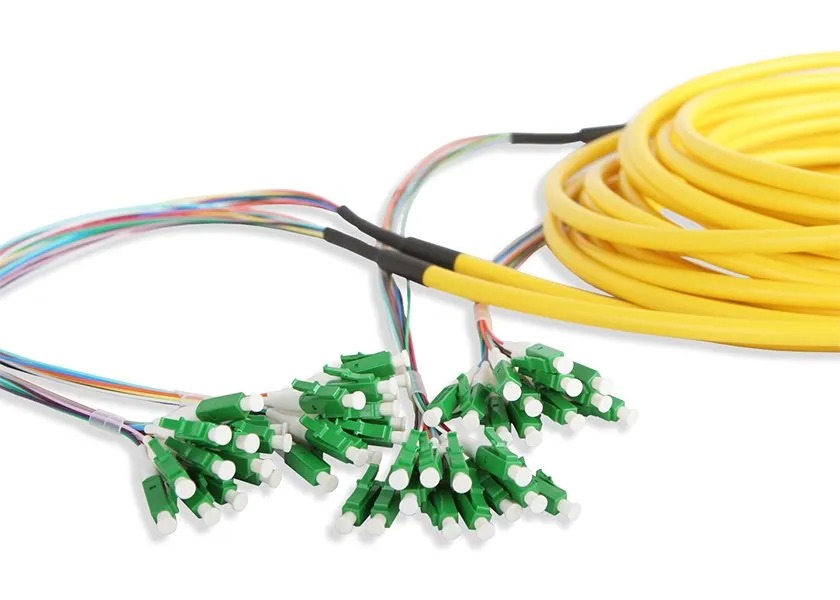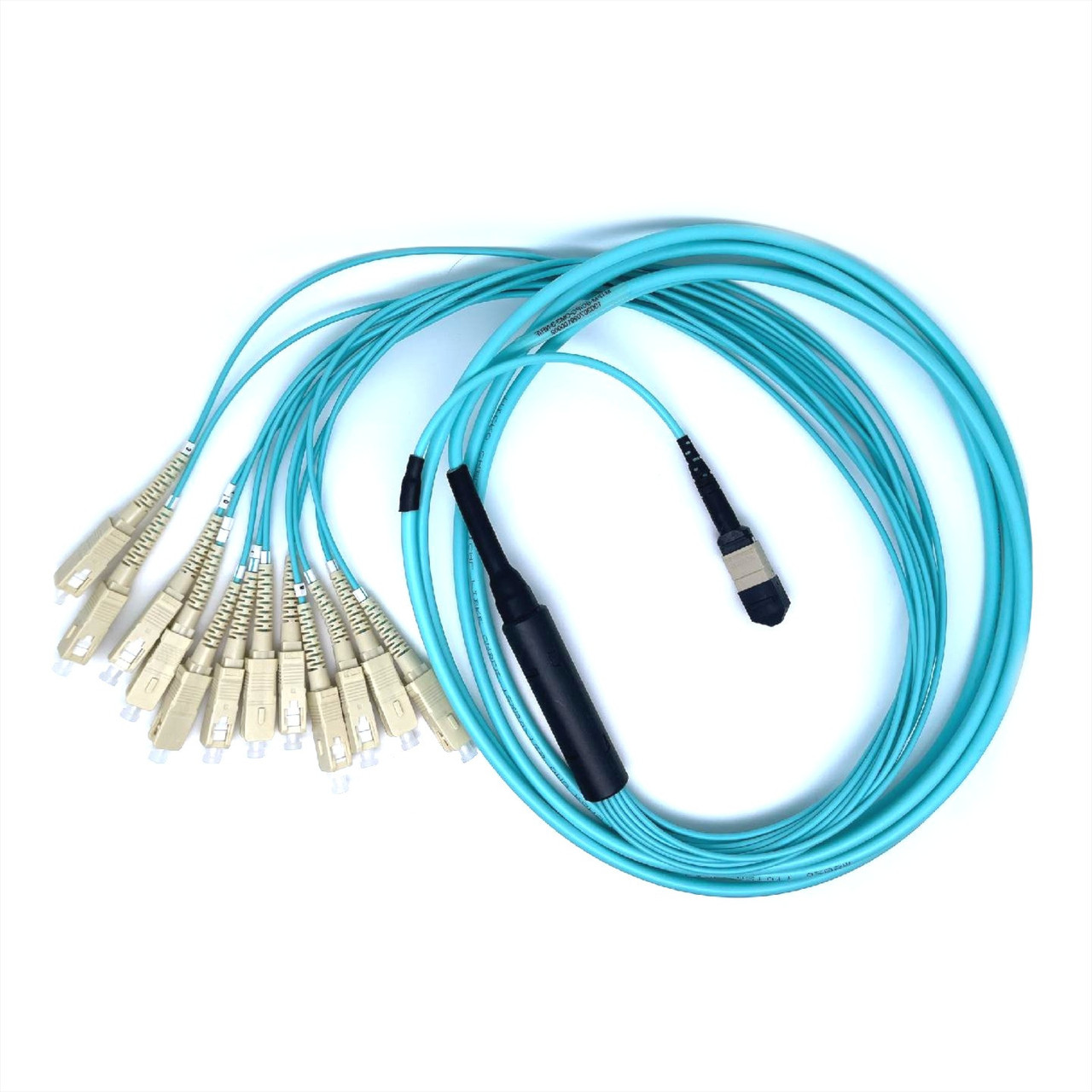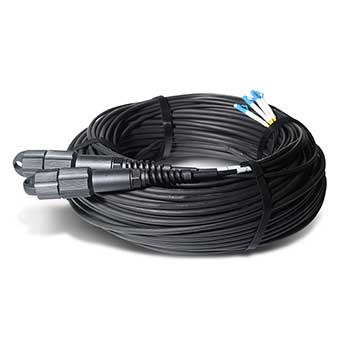Understanding the Benefits of Singlemode and Multifiber Branch Cables for High-Speed Data Transmission

Branch Cable Overview
Branch cables, also known as trunk cables, are essential components in high-speed data transmission systems. These fiber optic cables play a crucial role in efficiently transferring data over long distances. They are designed to handle the high bandwidth requirements of modern data networks, ensuring seamless and reliable data transmission. Branch cables serve as the backbone of data transmission infrastructure, connecting various network components and enabling the efficient flow of information. Whether it's for telecommunications, internet connectivity, or enterprise networking, these cables form the foundation of robust and high-performance data transmission systems.
Singlemode Advantages
Long-Distance Data Transmission
When it comes to long-distance data transmission, singlemode cables stand out due to their exceptional capabilities. These cables are specifically designed to minimize signal attenuation, making them ideal for applications that demand high bandwidth over extended distances. By reducing the loss of signal strength during transmission, singlemode cables ensure that data travels efficiently across vast networks without compromising on speed or integrity.
The low signal attenuation of single-mode cables allows them to maintain the quality and integrity of the transmitted data over extensive distances. This makes them a preferred choice for telecommunications providers, internet service providers, and large-scale enterprise networks where reliable long-distance data transmission is paramount.
Optimized Data Efficiency
One of the key advantages of using singlemode cables is their ability to optimize data efficiency while minimizing signal loss. The design of these cables ensures that data is transmitted with minimal interference or degradation, leading to enhanced security and reliability for critical data transmissions. This optimized efficiency makes single-mode cables an indispensable component in ensuring the seamless flow of high-speed data across expansive networks.

Multifiber Exploration
Increased Data Capacity
Multifiber cables are designed to offer increased data capacity, making them highly suitable for high-density data transmission requirements. These cables have the capability to handle multiple data streams simultaneously, significantly enhancing the overall data throughput and efficiency.
Versatile Applications
The versatility of multifiber cables makes them an ideal choice for various applications that demand high-speed data transmission. Whether it's telecommunications, internet connectivity, or enterprise networking, these cables provide the necessary flexibility and scalability to meet expanding data transmission needs.
By incorporating multi-fiber cables into their infrastructure, organizations can effectively enhance their data transmission capabilities while ensuring adaptability to evolving technological demands.
Data Transmission Enhancement
Efficient Data Transfer
Enhancing data transfer efficiency is a critical aspect of modern high-speed data transmission systems. Branch cables play a pivotal role in ensuring the seamless and reliable transfer of information across expansive networks. By leveraging these cables, organizations can meet the demands of modern data networks by facilitating efficient data transfer processes.
The use of branch cables enables the swift and reliable transfer of large volumes of data, meeting the requirements of high-speed applications. This efficiency is essential for maintaining the integrity and security of critical data transmissions, ensuring that information reaches its destination without delays or interruptions.
Incorporating branch cables into data transmission infrastructure facilitates efficient data transfer, allowing organizations to optimize their network performance and meet the increasing demands for high-speed information transmission.
Minimized Signal Interference
One of the key advantages of branch cables is their ability to minimize signal interference during data transmission. By reducing signal interference, these cables ensure consistent and uninterrupted information flow across networks. This stable and secure data transmission environment is particularly crucial for applications involving critical data, where any interruption or inconsistency in signal transmission could have significant implications.
Minimizing signal interference through the use of branch cables enhances the overall reliability and security of information transmission, providing organizations with a robust foundation for their high-speed data applications.

Maximizing Data Capacity
Scalability and Future-Proofing
When considering the maximization of data capacity, the scalability and future-proofing offered by branch cables are paramount. These cables provide a flexible and adaptable solution for expanding data volume without compromising on performance. By incorporating branch cables into their infrastructure, organizations can seamlessly scale their data transmission capabilities to meet evolving needs. This scalability ensures that the network can accommodate increasing data demands without requiring extensive overhauls or replacements.
Furthermore, the future-proofing aspect of branch cables is invaluable in the rapidly evolving landscape of high-speed data transmission. They offer a cost-effective means of preparing for future advancements in data technology, safeguarding investments by ensuring compatibility with upcoming innovations. This proactive approach to infrastructure development enables organizations to stay ahead of the curve and adapt to emerging requirements without significant disruptions.
Optimal Utilization of Bandwidth
The optimal utilization of available bandwidth is a critical consideration for maximizing data capacity in high-speed transmission systems. Branch cables are specifically designed to efficiently harness the bandwidth capacity available within networks, ensuring that data volume is maximized for seamless transmission. By leveraging these cables, organizations can meet the escalating demands for high-bandwidth applications while maintaining optimal performance.
The design of branch cables facilitates the efficient use of available bandwidth, allowing networks to handle substantial data volumes without sacrificing speed or reliability. This capability is essential for supporting modern data-intensive operations and ensuring that high-speed transmissions occur without bottlenecks or congestion.
Branch Cable Summary
In summary, branch cables, also known as trunk cables or fiber optic cables, are integral components for efficient data transmission. Both singlemode and multifiber options offer unique advantages to meet diverse data transmission needs. Singlemode cables excel in long-distance data transmission, minimizing signal attenuation and optimizing data efficiency. On the other hand, multifiber cables provide increased data capacity and versatile applications for high-speed data transmission requirements.
Understanding the benefits of branch cables is essential for optimizing high-speed data transmission.
Both singlemode and multifiber cables offer unique advantages for meeting diverse data transmission needs.
See Also
Optimizing Signal Transmission with Cassette Module and PLC Splitter
Understanding ABS Module: A Key Component for FTTH Applications
Waterproof Connectors in FTTH Networks: Enhancing Performance and Reliability
Understanding Different Types of Fiber Optic Adapters: A Comprehensive Guide
Choosing the Right Optical Fiber Attenuator: Factors to Consider
About US
Follow Us
AnetFiber company's main products are indoor and outdoor optical fiber cables, outdoor waterproof pre-connected fiber-to-the-home products, PLC optical fiber splitters, optical fiber jumpers and pigtails, MTP®/MPO high-density big data product solutions, optical fiber field quick connectors and research and development molding, injection molding and production of optical fiber distribution boxes, optical fiber chassis cabinets, the market has expanded to the world, Europe, America, Asia, the Middle East and Latin America.
Address
Shenzhen City, Baoan District, Yanluo Street, Tangxiayong Community, Yangyong Industrial Road, Tonggangda New Energy Vehicle Park 406
Contacts
+86 199 2655 3586

